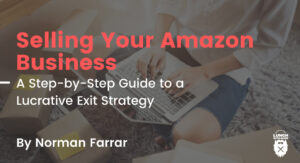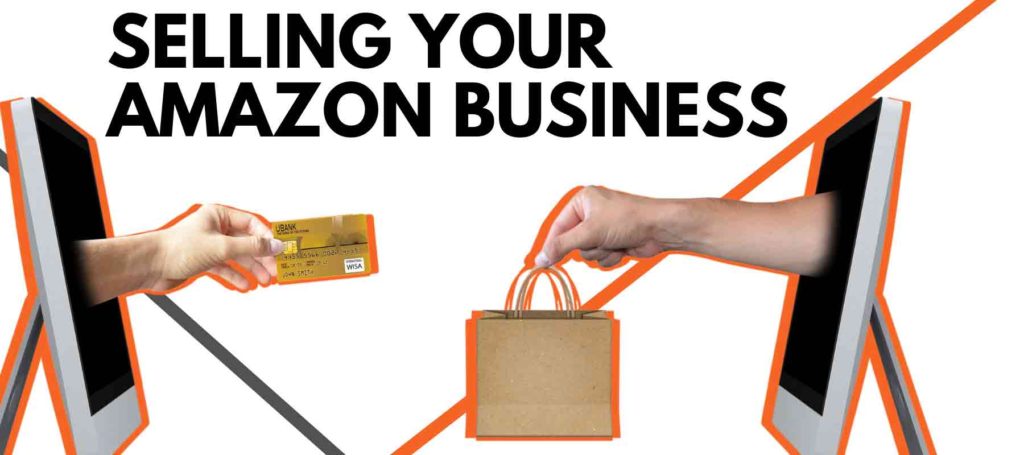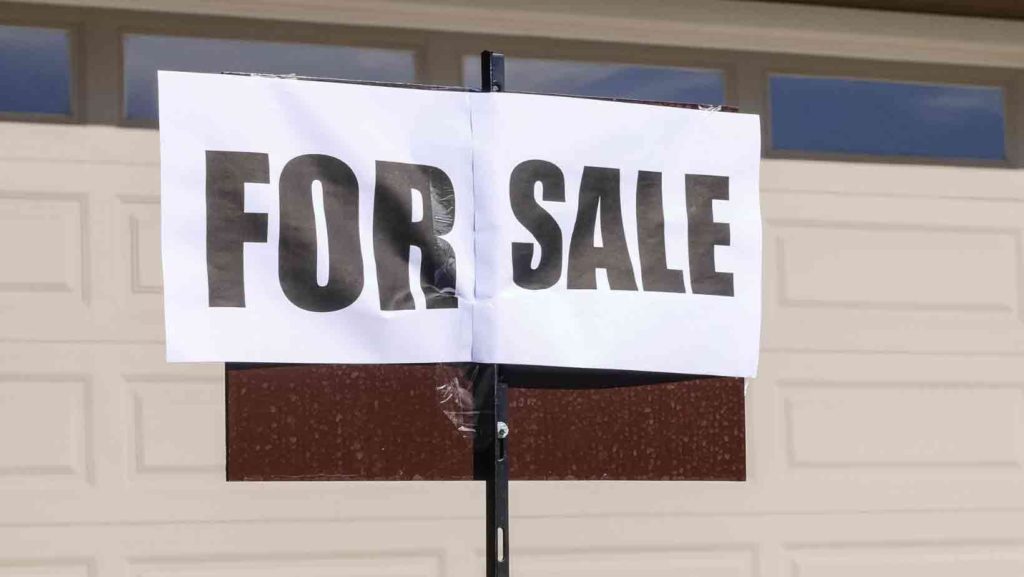

Wondering how to sell an Amazon business for the best possible value? We’ll get deep-dive into that shortly – but first, a brief historical introduction.
The Amazon marketplace is a powerful tool for buyers to find goods they want and sellers to reach customers all over the world. Amazon has grown from an innovative online bookseller confronting conventional brick-and-mortar retailers to a tech behemoth that has revolutionized the way e-commerce works in the last 23 years.
Amazon introduced the game-changing Fulfilment by Amazon (FBA) service in 2006. FBA helps sellers to take advantage of Amazon’s global network of over 100 fulfillment centers and 15 sorting centers to deliver goods to customers all over the world easily. All of this while remaining hands-off from their e-commerce business’s physical operations.
This gives Amazon sellers exclusive access to buyers in 185 countries, and it’s a no-brainer for Amazon sellers in many ways. Therefore we got in talks with Joe Valley and Ken Kubec, who’ve gone into great depth about how to sell an Amazon business after increasing its value. We’ve prepared this guide by incorporating all those insights they shared on the podcasts.

Since you’re reading this, we assume you already have a well-established, successful Amazon FBA business. However, if you don’t, this guide should still provide insight into exit strategies, improving activities, and knowing what is needed to get to the ‘light at the end of the tunnel’ whether you are in the process of creating your FBA company or thinking about building one.
Beginning with the end in mind allows you to concentrate on what really matters: building a machine that is both powerful and competitive. We sincerely hope you will find this guide helpful in addressing the unique challenges and opportunities you may encounter on your e-commerce journey.
Let’s get started with it, then.
Amazon FBA businesses can be broadly divided into three main categories:
Let’s elaborate a bit about each of these types now.
Finding goods (online or in-person) that you can resell on Amazon for a profit is what reselling entails. This is the simplest form of Amazon FBA business to start. Essentially, it’s a kind of trading in which you buy wholesale and sell retail.
How saleable is this business type?
Even if you’re making a lot of money, this form of company is notoriously difficult to sell. Convenience is the real added value for the consumer. In a sense, you’re “competing for the buy box.” Buyers are taking on a lot of risks when buying a reseller company.
Taking existing products and applying your own name to them is how Amazon company works. Many manufacturers sell “white label” products, which allow you to rebrand their products to meet your specific needs.
How saleable is this business type?
In some instances, the saleability of a private label company is determined by the brand’s reputation. If there is a lot of positive feedback, the company has a high Best Seller Rank, and repeat buyers, the brand’s attractiveness will naturally rise.
How long the account has been in operation, how diversified the product mix is (and how skewed revenues are against particular products), degree of owner participation, and sales and profit growth patterns are some of the main factors affecting the saleability of a private label company.
The saleability and value can be improved with digital assets outside of the Amazon website, such as a social media presence, an online “standalone” shop and customer mailing lists.
This is the holy grail of Amazon FBA companies. While it is more difficult to succeed than creating a reseller or private label company, it generates more long-term value that is difficult to duplicate by competitors.
This entails either making something original (for example, improving on a common product such as a more powerful mouse trap or developing a new health supplement formula) or taking an existing product and enhancing its appeal to customers somehow.
A private label brand varies from this in that a private label actually adds the brand to an existing product. The brand is more than just an Amazon store for this form of company.
How saleable is this business type?
The value of proven, well-known brands and patented goods is much greater than the value of the first two forms of businesses. They have a lot of “staying power” in the market and, when done correctly, they will draw a lot of loyal customers. This is extremely desirable from the standpoint of a prospective buyer and can command a substantial premium.
The number of years of operation, how much of the profits are directly affected by the business owner, margins, market share, web traffic, and digital assets outside of Amazon (such as social media presence, customer mailing lists, standalone online stores, and automated systems) are all factors that impact the saleability of this form of business.
The cost of stock in Amazon warehouses (including the cost of bringing stock into Amazon’s warehouses) is usually added with a multiple of gross earnings before taxes to evaluate the value of an Amazon FBA business. The only expenses taken into account for valuation purposes are the cost of products sold and the requisite expenses to operate the company.
Seller Discretionary Earnings (SDE) is a standard industry term for this earnings measurement. Annual SDE is used to measure valuation multiples in most cases. However, many monthly SDE may be useful for companies in a rapid growth phase or declining for the past 3-6 months.
There are a couple of methods of calculating SDE.
SDE = Revenue – Cost of goods sold – Operating expenses + Addbacks
SDE = Net profit before tax + Addbacks
“Revenue wise, ignore it completely because your business is not going to be valued on revenue, it’s going to be valued on profit or what’s called seller’s discretionary earnings. So that’s net income, plus addbacks.
“What the hell’s an addback? It’s your owner’s salary. It’s your Mastermind groups, it’s your credit card cashback that you slide over to your personal account and don’t report it. There’s no way to properly report it. Anyway, the IRS doesn’t know what to do with it. But most people think they’re tricking the IRS, when in fact, it’s a discount on advertising.
“So it’s your money anyway, you got to pull that up. But those things can add up to a tremendous amount. So it’s net income plus addbacks equals seller’s discretionary earnings,” advises Joe.

You can increase the value of your Amazon FBA company in a variety of ways. In many respects, an FBA company’s flexibility opens many doors to expansion and efficiency gains.
Suppose your earnings are primarily derived from a few items or are subject to significant seasonal fluctuations. In that case, it could be worthwhile to diversify into other product categories or look for seasonal products that sell well when your current seasonal products don’t. This will help to increase cash flow stability and minimize dependence on revenue from a single product.
A successful search engine optimization (SEO) strategy will result in significant increases in search traffic and new customers for companies that have their own websites. This kind of practice necessitates preparation, time, and effort. However, when done correctly, it can pay off handsomely and help establish your brand as a household name.
The most valuable form of company is one with a strong brand, exclusive goods, or patented technology, followed by private label companies, and finally resellers. If you’re willing to put in the time and effort to move your company up the value chain, this can be a perfect way to boost the value of your FBA business while still earning the money you’ve worked so hard for.
Anything that can be automated or outsourced should be automated or outsourced. You will build a self-managing asset that is more appealing to potential customers by removing yourself from the driver’s seat as much as possible.
The more details about your customers you have, the better. It might be a smart idea to create a website that showcases your products and brands and use social media to engage with customers.
Amazon sales don’t usually provide a lot of details about the customers. You will collect useful information that you can use for potential marketing campaigns by establishing a presence outside of Amazon.
Sign exclusivity contracts with manufacturers where possible to ensure that no one else has access to the goods. Although these contracts are not necessarily strictly followed, they give value to potential customers and serve as a barrier to entry for rivals looking to steal your market share.
Try to get favorable terms on famous goods that you don’t have exclusive access to. Astute customers will like to know that they will be able to continue to source goods from the same vendors on the same terms and that there will be no disruptions in supply chain operations.
Study other items that might add value to your company if your business is biased toward only a few products.
Suppose you have a lot of goods that aren’t selling well. In that case, it may be a brilliant idea to look at the revenue and profitability of each stock-keeping unit and eliminate or increase the profitability of the ones that aren’t. Increase rates, if possible, or negotiate a better offer with the factory to increase profitability.

Buyers come in all shapes and sizes, but we distinguish between individuals/partnerships and businesses/private equity firms.
Individual buyers are motivated primarily by a fear of losing money. Growing the company is important, but since they are usually investing their own capital, the most important factor is how much risk they are willing to take. Individual buyers are more likely to be interested in buying an income stream. In most cases, they would choose to manage the company themselves.
Individual buyers could include corporate employees, online entrepreneurs with experience seeking to expand their portfolio or owners of conventional companies looking to expand into the online world.
If you’re selling to a single person, it’s a bright idea to emphasize the business’s defensibility to demonstrate market longevity. As a result, companies with patented products or existing brands appeal to individual consumers the most.
If we’re talking about companies worth more than $2 million, we’re dealing with a “different kettle of fish.” Companies will also seek to acquire their rivals, suppliers, or other strategic companies that can add value to their operations as they move forward.
Creating synergy to use the combined resources of the company they’re trying to buy and their own to expand the business, penetration into new markets, and the positioning of the brand in the market are all critical factors for businesses.
On the other hand, the obligation to provide a return on equity to shareholders drives private equity and investment funds. They must be buying businesses because cash sitting in a bank account does not make investors happy. Investment funds can move quickly on good offers and have access to lines of credit if needed.
“I had an Amazon business. I got written permission from Amazon to transfer my account. I just asked them how to do it enough times, they finally just said, here’s how you do it and they put it in writing. They sent me an email, it’s in the book. No, it’s perfectly fine to transfer control of a seller account.
“In the US, US to US one is not hard at all. It gets hard when you’re a US business owner trying to transfer a Germany, UK account, or something like that because their money laundering laws are much more stringent than ours and it’s the government that’s making it harder, not Amazon. But in the US. If you’re buying a US Amazon account, it’s not hard at all,” says Joe.

There are four main ways of selling an Amazon FBA business:
Marketplaces for business listings are typically chaotic, with thousands of listings. It can be difficult to find many interested customers if the company does not stand out from the crowd.
It can be a feasible way to sell a company without incurring the fees of a broker if you are experienced in buying and selling businesses and have the time to operate a listing. If you are a really busy person or have no experience selling companies, this might not be the best option for you.
You must have an overview of the company and some simple financials to list your business for sale on a marketplace. www.bizbuysell.com is a popular business marketplace.
Websites like www.flippa.com are ideal for selling small companies with a short turnaround time for less than $5,000. These auction marketplaces attract buyers looking for a bargain, so expect a 0.5-1.5x earnings multiple.
These customers are frequently inexperienced businesspeople, and it is not unusual for them to be making their first purchase, so you will need to assist them.
Auctions are a great way to get a fast sale on a low-value company, but they aren’t always the best option for medium-large FBA companies.
This approach typically entails researching potential buyers and cold calling them to see if they are interested in purchasing your business.
Since potential customers are frequently your rivals, you run the risk of disclosing sensitive information to those who are most interested in it. It can make sense to sell the company yourself if you are well-known in the industry and have an extensive network of contacts.
The DIY approach does not have the comparative benefit of getting a large number of potential customers, and it has a poor success rate. When approached by an interested buyer, it is normal for people to sell their company privately.
If your company is worth more than $25,000 and you don’t have the time, experience, or patience to sell it yourself, listing it with a broker is probably your best bet.
Brokers have a lot of experience selling companies and can quickly answer any questions you may have. They will assist you in maximizing the selling price and advising you on the best terms to protect you legally.
To work with a broker, you must have all of the necessary details on hand and be well-organized. When the right offer comes along, their contacts are usually ready to buy.
Brokers are more expensive than selling individually or through a marketplace. Good brokers, though, know how to get the most money for your business. If you pay 15% in fees but your company sells for 25% more, you’re still in the black at the end of the day!
Now that we’ve told you all you need to know before selling, what are the actual steps to selling your Amazon business? We’ll take a look at a general overview of the sale process and how it operates when a successful broker is involved in the process.
The steps involved in the sale process are:

That’s about all you need to know before you head out to sell your flourishing Amazon FBA business and get the best value for it.
We hope you’ve gained a better understanding of where, how, why, and when to sell your Amazon business. The importance of automating processes is a recurring theme in this article.
Indeed, with all of the tools at our disposal in today’s world, outsourcing and automation may be one of the most significant game-changers for e-commerce. You will eliminate the need to physically hold stock and handle operations by using Fulfillment by Amazon.
Tune in to our podcasts to gain further insights on growing and selling an Amazon business and much more.
Norman Farrar Entrepreneur and businessman Norman “The Beard Guy” Farrar stands at the forefront of the economic mega-machine known as Amazon Marketplace. As a leading expert with over 25 years of product sourcing, development, and branding expertise, Norm is an advisor to many and an inspiration to all.

Norman Farrar Entrepreneur and businessman Norman “The Beard Guy” Farrar stands at the forefront of the economic mega-machine known as Amazon Marketplace. As a leading expert with over 25 years of product sourcing, development, and branding expertise, Norm is an advisor to many and an inspiration to all.